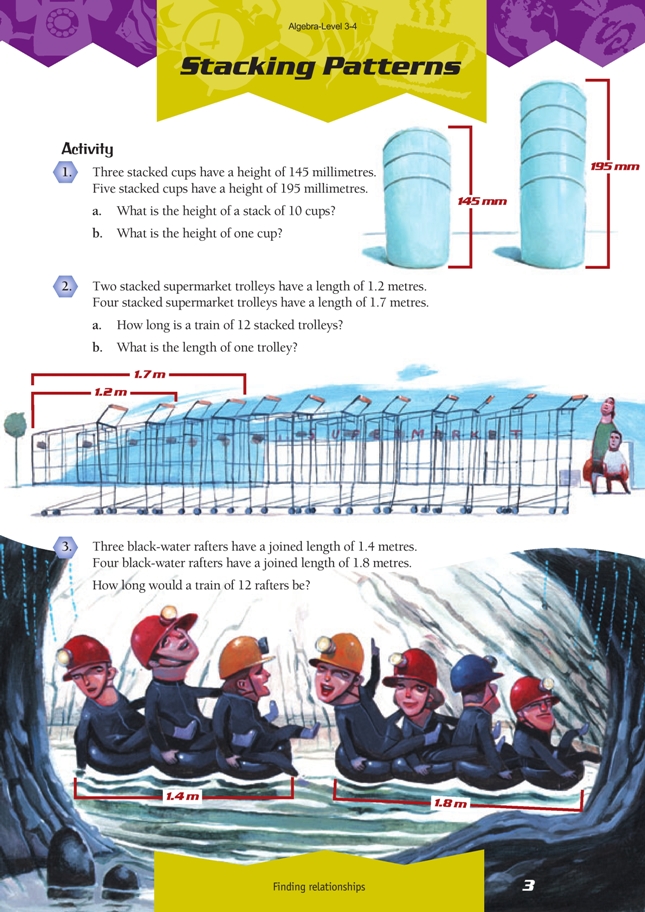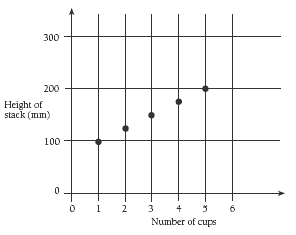This is a level 4 algebra strand activity from the Figure It Out series.
A PDF of the student activity is included.
Click on the image to enlarge it. Click again to close. Download PDF (317 KB)
use graphs, tables and equations to describe a linear number pattern
The questions in this activity are based on patterns. Number relationships in which a variable grows by a constant amount are known as variable relationships.
Encourage the students to think about what strategies they could use to solve each question.
In question 1, the addition of each extra cup increases the height of the stack by a constant amount (25 millimetres). If the relationship between the number of cups and the height of the stack is graphed on a number plane, the ordered pairs lie on a straight line.
The students could also work out the height of the cups using logic.
Five cups have a height of 195 millimetres, and three cups have a height of 45 millimetres. So the two extra cups in the five-cup stack add an extra 50 millimetres. This means that each cup, other than the first, must add 25 millimetres to the stack because 50 ÷ 2 = 25 millimetres.
This helps to find the height of the first cup as well: Three cups gives 145 millimetres, so 145 – 50 (the two extra cups after the first) = 95 millimetres.
The students can use this logic to find the height of any given stack of cups. In general words, it will be: 95 mm (for the first cup) + 25 mm x the rest of the cups. So for 21 cups, the height would be:
95 mm + 25 mm x (21 – 1) = 95 mm + 25 mm x 20
= 95 mm + 500 mm
= 595 mm.
Another useful strategy for students at levels 3–4 is to use a table to organise the data. For example, in question 2:
When two trolleys are added to the first two, the length increases by 0.5 metres, so each trolley adds 0.25 metres to the length of the stack.
The students can use the constant (0.25 metres) to complete the table:
After the students have found the constant, they can use addition and (preferably) multiplication to find the stack length for any other number of trolleys. For example, 12 stacked trolleys will have a length of
Answers to Activity
1. a. 320 mm
b. 95 mm
2. a. 3.7 m
b. 0.95 m
3. 5 m (assuming all legs are the same length)



